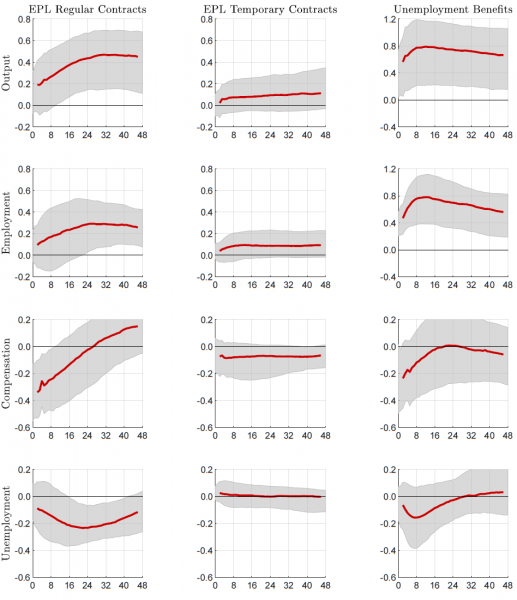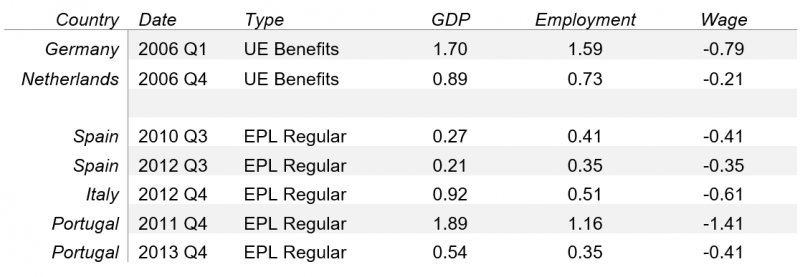References
Antolin-Diaz, J. and Rubio-Ramirez, J. 2016. Narrative sign restrictions for VARs. American Economic Review 108(10): 2802-29.
Aumond, R., Di Tommaso, V., and G. Rünstler. 2021. A quarterly narrative database of labor market reforms in euro area economies. European Central Bank mimeo.
Boeri T., Cahuc, P., and Zylberberg, A. 2015. The cost of flexibility-enhancing structural reforms: a literature review. OECD Economics Department working paper 1246.
Boeri, T. and Garibaldi, P. 2007. Two tier reforms of employment protection: a honeymoon effect? The Economic Journal 117: F357-F385.
Budnik, K. and Rünstler, G. 2020. Identifying SVARs from sparse narrative instruments. European Central Bank working paper 2353.
Cacciatore, M., Duval, R. Fiori G., and Ghironi, F. 2016. Market reforms in the time of imbalance. Journal of Economic Dynamics and Control 72: 66-93.
Jarocinski, M. and Karadi, P. 2020. Deconstructing monetary policy surprises: the role of information shocks. American Economic Journal: Macroeconomics 12(2): 1-43.
Mertens, K. and Montiel Olea, J. 2018. Marginal tax rates and income: new time series evidence. Quarterly Journal of Economics 133(4): 1803-1884.
Rünstler, G. 2021. The macroeconomic impact of euro area labor market reforms: evidence from a narrative panel VAR. European Central Bank working paper 2592.





